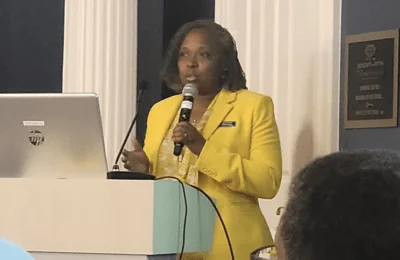House Speaker Rep. Emanuel Chris Welch (D-Hillside) | Photo Courtesy of Emanuel Chris Welch
House Speaker Rep. Emanuel Chris Welch (D-Hillside) | Photo Courtesy of Emanuel Chris Welch
The dollar has been around long enough that people don’t question it as currency. According to a Facebook post by Rep. Emanuel “Chris” Welch, Aug. 8 is “National Dollar Day.”
"On this day in 1786, U.S. Congress officially adopted the dollar as our official form of national currency," said Rep. Emanuel "Chris" Welch, in a Facebook post. "Since then, our nation has reached economic prosperity, blossoming into the world's largest national economy and a leading global trader."
National Days Today, which confirms “National Dollar Day” is Aug. 8, says that “The United States dollar was minted in the year 1794 popularly termed as the Flowing Hair Dollar. It encompasses 89.25% silver and 10.75% copper, as per the regulation defined in the Law of Coinage Act in 1792. As of now, it is minted in the form of both coin and paper currency. It is estimated that almost 1.5 trillion dollars that are in circulation are of federal notes almost covering 90 percent of the overall circulation.
Investopedia explains how the dollar became the world’s reserve currency in a May 28 article. It notes that although the dollar has a long history, the first official dollar in the form we know today was printed in 1914, following the establishment of the Federal Reserve. It wasn’t until 1944 that the dollar would become the world’s reserve currency, according to Investopedia, with the passing of the Bretton Woods Agreement.
“Instead of gold reserves, other countries accumulated reserves of U.S. dollars. Needing a place to store their dollars, countries began buying U.S. Treasury securities, which they considered to be a safe store of money,” Investopedia wrote.
In an August 31, 2018 article, Time magazine explored the design of the dollar bill. The publication said colonies minted their own money before the establishment of the U.S. Treasury, and in 1775, the Continental Congress created “Continentals,” which were considered the first overarching colonial currency. Next came “greybacks” issued by the Confederacy during the Civil War. The Union then created its own currency, which included several anti-counterfeiting measures, like ink that resisted copying, which rendered the bills green. When the Federal Reserve Act created modern currency in 1913, the design incorporated a variety of elements from former currency – like the green color, intricate borders, and proportions.






 Alerts Sign-up
Alerts Sign-up